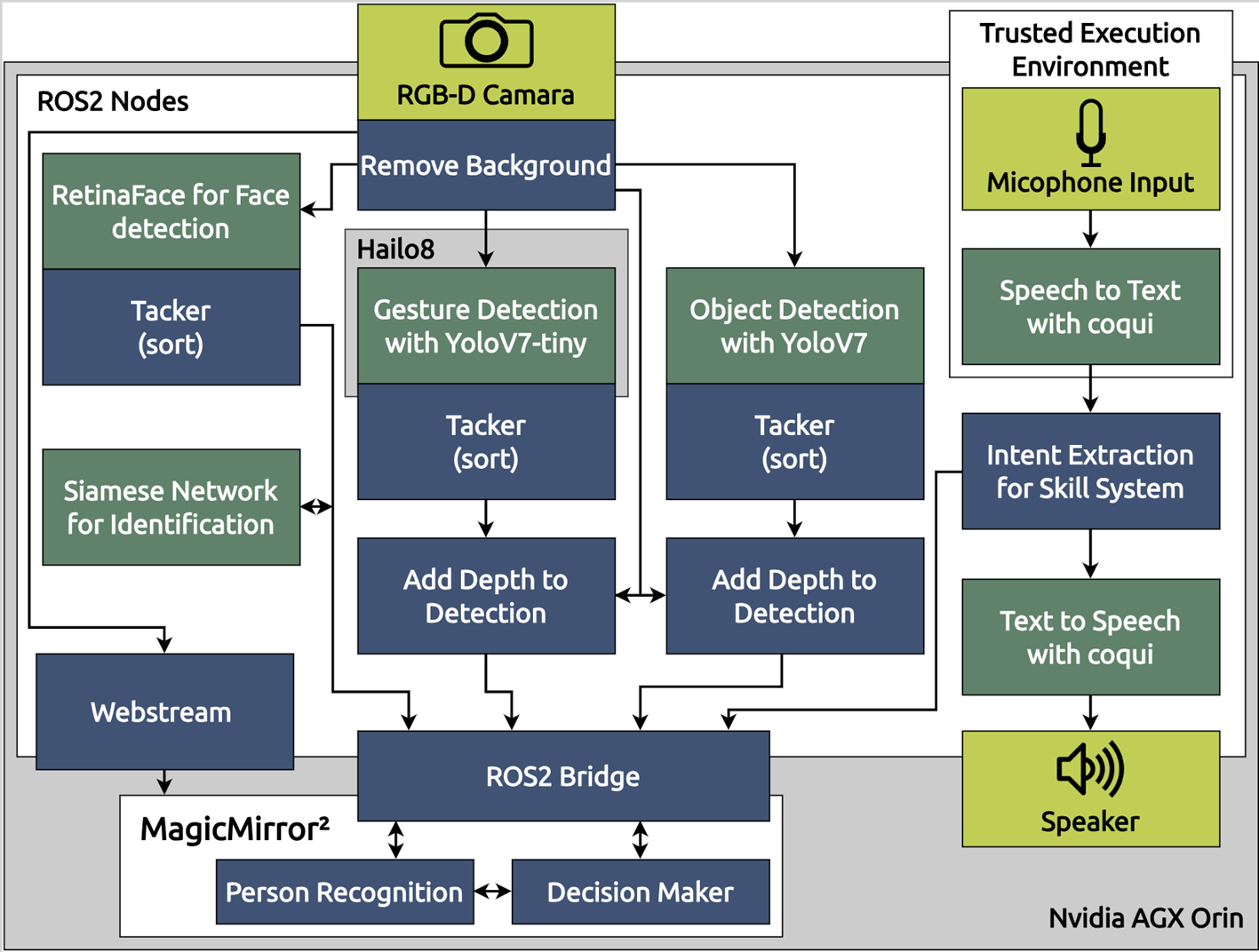Use Cases
A number of VEDLIoT internal use-cases were defined to demonstrate the effectiveness of the VEDLIoT toolchain and hardware platform with respect to resource efficiency, robustness, safety and security in the domains industrial IoT, automotive, and smart home.
They are described here as examples for the already wide range of ambitious requirements, that should be extended by the selected Open Call projects. Proposals submitted to VEDLIoT-Open can address similar or different areas of AIoT applications.
INDUSTRIAL
Arc detection in DC distribution cabinets
This use case aims to provide a DL-based solution for DC series arc fault detection. Series arc faults in distributed DC systems can cause significant damage, and they are harder to detect compared to arc faults in AC systems. By implementing DL in the detection system, patterns of current flow in DC systems during arc faults can be recognized, and corresponding measurements can be applied in time to avoid damage.
Highlights of the use case:
- Setup of a test bench for DC series arc fault simulation
- Combination of conventional methods and DL models for higher accuracy
VEDLIoT provides technical support to overcome challenges in the use case - Framework for standardizing and accelerating AI implementation in anomaly detection in industry scenarios
- Tools and methods for hardware and software optimization for lower latency in the detection procedure, from the first spark till inference
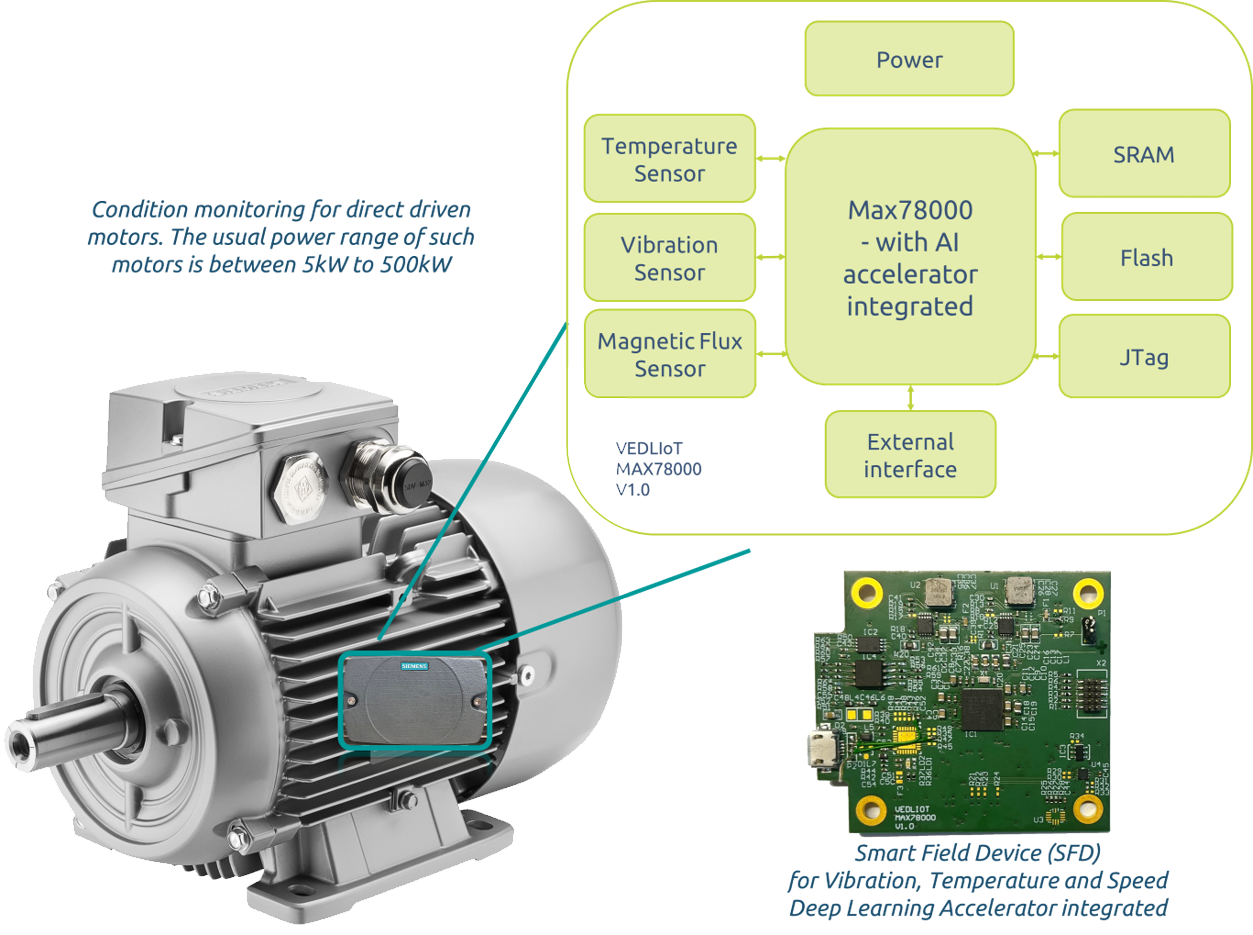
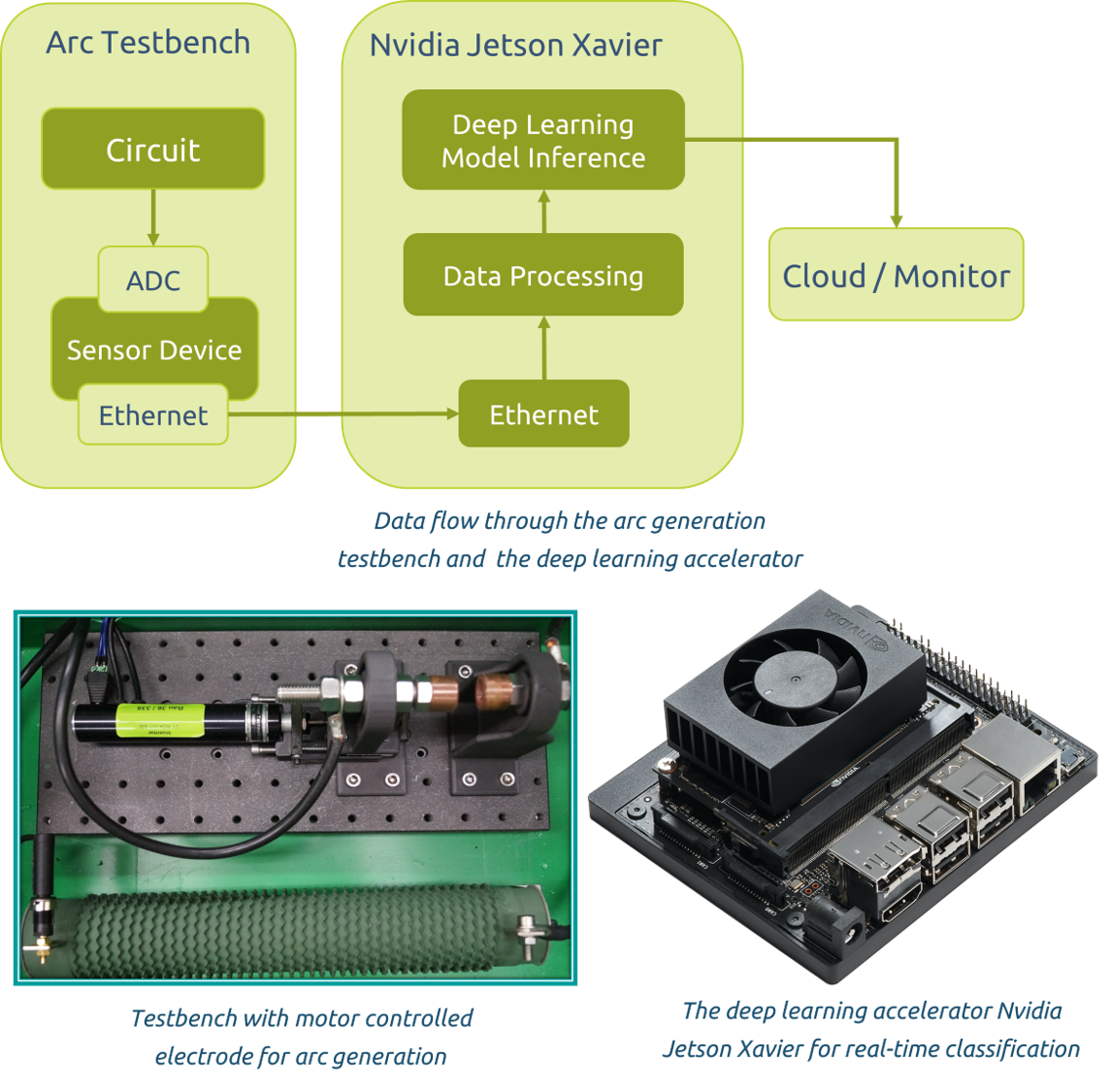
Electrical motor condition monitoring
This use case aims to build a compact sensing device that combines DL for motor state monitoring. By monitoring the motor’s running status, predictive maintenance can be performed, thus improving reliability, and reducing system downtime.
Highlight of the use case:
- Battery-driven, energy-efficient device that integrates sensing, DL-based data processing, and communication capabilities
- Easy to mount and highly adaptable for a range of motor models.
- State monitoring for operational, thermal, and mechanical conditions monitoring.
VEDLIoT could help the use case reach its goal:
- Fast and reliable development by implementing analysis tools from the requirement engineering framework
- Ultra-low energy consumption while having DL running on the device through model compression and hardware acceleration.
Automotive
Today, premium light vehicles contain an abundance of ECU’s. An example is the camera ECU which interprets the data captured by the camera and presents objects present in the scene to the vehicle. A certain processing capacity is needed in the vehicle which comes with a cost, both components but also energy usage. The Automotive use-case will explore how the Deep Learning task can be distributed from the vehicle to a 5G base station and evaluate the performance in terms of robustness and energy efficiency. This can also open opportunity to utilize on-demand services to the vehicle based on the data shared from the vehicle.
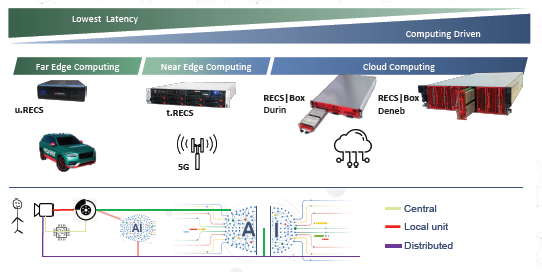
The scenario considered by the evaluation of the Automotive Use-Case is the “Pedestrian Automatic Emergency Braking (AEB)”. A pedestrian should be detected when it enters the lane ahead of the vehicle which will trigger an emergency breaking of the vehicle.
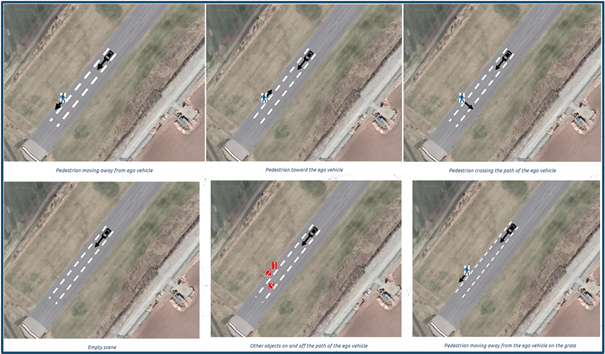
SMART HOME
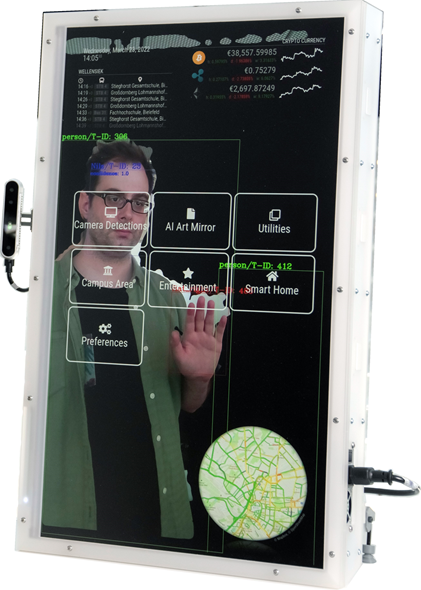
The smart mirror was developed as an intuitive interface to assist the interaction in smart home environments with a strong focus on local processing for data privacy.
It shows a mirror image of the user and displays personalized information and the status of the smart home. Based on the reconstructed virtual mirror image generated from dept imaging cameras, the user’s face, some basic objects, and simple hand gestures are recognized and used for an intuitive control. In addition, a voice recognition system, supported by natural language processing (NLP), enables an interaction via a voice assistant. All computations are performed locally on the device using open-source software, ensuring maximum privacy as no data is transferred to the cloud or to any third-party service providers. A significant challenge in this project is combining multiple machine learning techniques. The methodology developed within the VEDLIoT project helps to keep up with high performance while also maintaining a low energy consumption- Newest security techniques ensure meeting the high privacy requirements.
